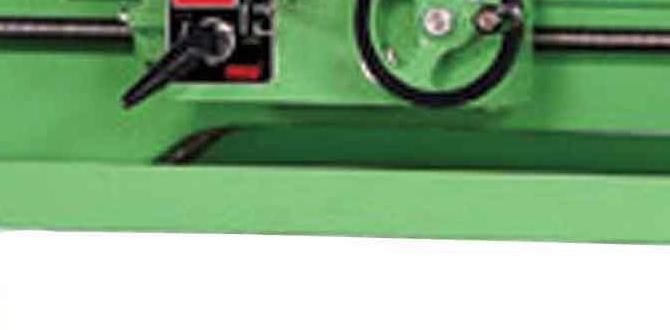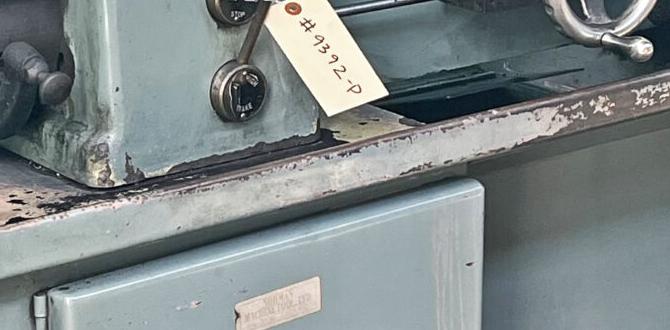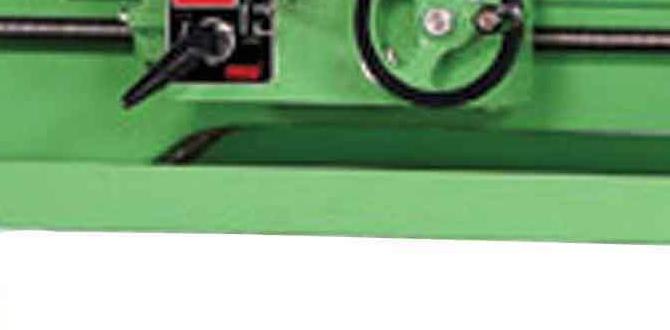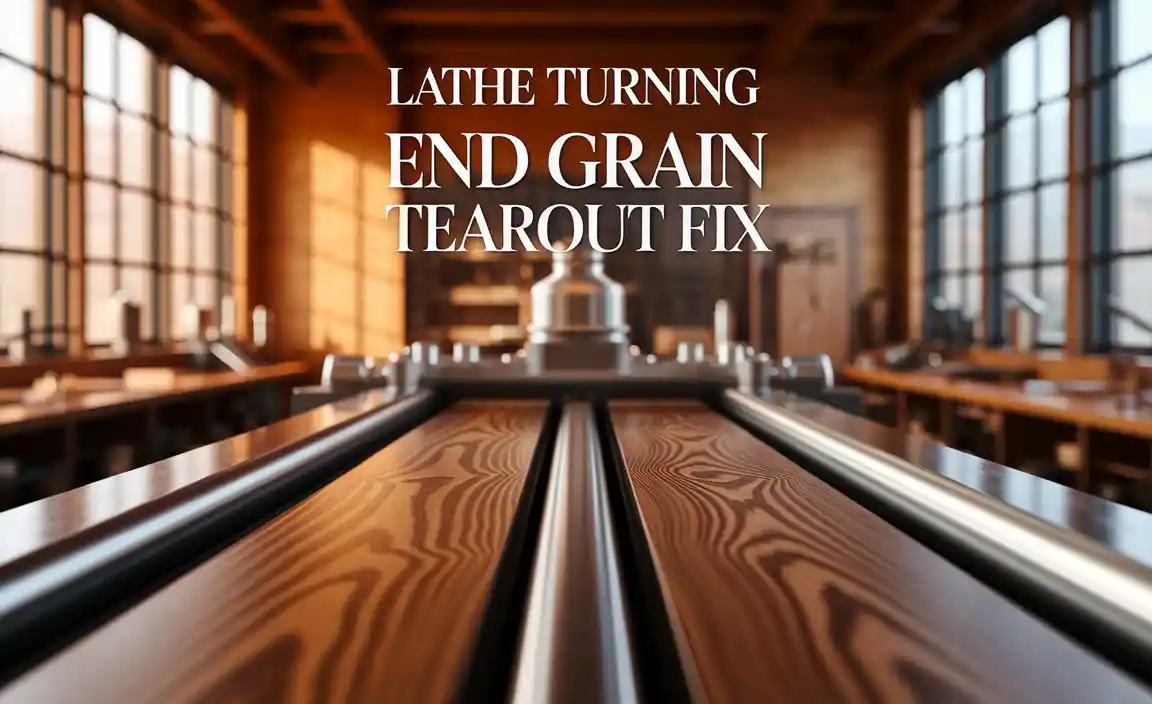Wood Lathe Speed Formula: Essential Guide
The wood lathe speed formula is a cornerstone for any woodturner looking to achieve optimal results, ensuring both the quality of their work and their safety. Understanding how to correctly calculate the appropriate spindle speed for a given workpiece material and diameter is not just a matter of convenience; it’s crucial for efficient material removal, achieving a smooth finish, and preventing dangerous situations. Without this fundamental knowledge, woodturners risk burning their work, tearing the grain, encountering excessive vibration, and even damaging their lathe or causing personal injury. This guide will demystify the calculations involved, explore the factors influencing speed selection, and provide practical advice for applying the wood lathe speed formula effectively.
Understanding the Core Concepts: RPM, Diameter, and Cutting Speed
At its heart, the wood lathe speed formula operates on three key variables:
Revolutions Per Minute (RPM): This is the rotational speed of your lathe’s spindle, measured in how many full turns the spindle completes in one minute. Most wood lathes have adjustable RPM settings.
Workpiece Diameter: This refers to the diameter of the piece of wood you are turning. This measurement will change throughout the turning process, from the initial roughing out stage to the final sanding.
Cutting Speed (Surface Speed): This is the speed at which the cutting edge of your tool moves across the surface of the workpiece. It’s typically measured in feet per minute (fpm) or meters per minute (mpm). This is the crucial figure the formula helps you determine.
The relationship between these variables is inverse. As the workpiece diameter increases, the required RPM must decrease to maintain the same cutting speed. Conversely, as the diameter decreases, you can increase the RPM.
The Wood Lathe Cutting Speed Formula Explained
The most common and widely used wood lathe cutting speed formula is:
RPM = (Cutting Speed × 12) / π × Diameter
Where:
RPM: The desired spindle speed in revolutions per minute.
Cutting Speed: The ideal surface speed for your material and operation, typically in feet per minute (fpm).
12: A conversion factor to change feet into inches (since diameter is usually measured in inches).
π (Pi): A mathematical constant, approximately 3.14159.
Diameter: The diameter of your workpiece in inches.
Let’s break down why this formula works:
1. cutting speed (fpm): You need to decide on an appropriate cutting speed. This is influenced by several factors we’ll discuss later.
2. Converting Cutting Speed to Inches per Minute: Since our diameter is in inches, we need to align our units. Multiplying the cutting speed (fpm) by 12 gives us the cutting speed in inches per minute.
3. Calculating Circumference: The term `π × Diameter` calculates the circumference of your workpiece in inches. The circumference represents the total distance the surface of the workpiece travels in one full revolution.
4. Determining RPM: If you know the total distance the surface travels per minute (Cutting Speed × 12) and the distance traveled in one revolution (Circumference), dividing the former by the latter tells you how many revolutions are needed per minute to achieve that cutting speed.
Practical Application:
To make this formula easier to use, many woodturners utilize a simplified version or a chart. A more practical arrangement of the formula is:
RPM = (Cutting Speed × 38.2) / Diameter
This simplified version incorporates the `12 / π` calculation (which equals approximately 3.82) into a single constant, making it quicker for on-the-fly calculations.
Example:
Let’s say you’re turning a piece of oak with a diameter of 6 inches, and you’ve determined an ideal cutting speed of 2000 fpm.
Using the simplified formula:
RPM = (2000 × 38.2) / 6
RPM = 76400 / 6
RPM = 12733.33
However, this is a very high RPM for a 6-inch piece in oak. This highlights that the “ideal” cutting speed is not a universal constant but rather a guideline. You’d likely choose a lower cutting speed for roughing or a denser wood.
Let’s try again with a more appropriate cutting speed for roughing out a 6-inch oak blank, say 1000 fpm:
RPM = (1000 × 38.2) / 6
RPM = 38200 / 6
RPM = 6366.67
This is still quite high for a typical lathe, suggesting the formula is more useful for calculating the maximum safe RPM or for determining speed on larger diameter pieces or at specific operations.
A more common way this formula is used is to find the appropriate RPM from a known cutting speed. If you have a lathe with a variable speed control, you’ll often set it by ear and feel. However, for a starting point, it’s invaluable.
Let’s use the standard formula with an example:
You have a 4-inch diameter piece of maple, and you want to turn it with a cutting speed of 500 fpm for a smooth finish.
RPM = (500 fpm × 12 inches/foot) / (3.14159 × 4 inches)
RPM = 6000 / 12.56636
RPM = 477.46
So, you’d set your lathe’s RPM to approximately 477 RPM.
Factors Influencing Wood Lathe Speed Selection
The wood lathe cutting speed formula provides a mathematical basis, but real-world woodturning requires considering several other vital factors:
Wood Type: This is arguably the most crucial factor.
Hardwoods (Oak, Maple, Walnut): Generally require lower speeds due to their density.
Softwoods (Pine, Fir): Can often be turned at higher speeds, but be wary of tear-out.
Green Wood: Softer and more unpredictable, often requiring significantly lower speeds to prevent warping or cracking.
Lumber Defects: Knots, cracks, or uneven grain can necessitate slower speeds for safety and to prevent the tool from catching.
Tool Type and Sharpness:
Roughing Gouges: Designed for aggressive material removal, they can handle slightly higher speeds on rough stock compared to finishing tools.
Scrapers and Spindle Gouges: Used for finer cuts and finishing, they benefit from slower speeds to avoid burning and achieve a smoother surface. A sharp tool, regardless of type, is paramount. Dull tools require more force, generate more heat, and necessitate slower speeds.
Operation Being Performed:
Roughing Out: Removing waste material, especially on a freshly cut blank, can be done at a moderate to high speed, but being cautious of imbalances.
Bead Making: Delicate cuts often require slower, more controlled speeds.
Hollowing Forms: Bowls and hollow vessels are prone to vibration and imbalance, especially when starting, so lower speeds are essential.
Sanding: This is often done at the lowest practical speed to prevent overheating and dust buildup, and to allow the sandpaper to do its job effectively.
Workpiece Imbalance: An off-center blank or one with significant irregularities will vibrate excessively at higher speeds. Always start at a low RPM and gradually increase as the piece becomes more balanced.
Lathe Capabilities and Size: Larger, more powerful lathes can often handle larger diameters at lower RPMs. Smaller hobby lathes may have limitations on the maximum diameter they can safely turn. Always respect your lathe’s specifications.
Practical Tips for Using the Wood Lathe Speed Formula
Use Tables and Charts: Many woodworking resources offer pre-calculated speed charts for common wood types and turning operations. These are excellent starting points.
Start Slow, Then Adjust: When in doubt, always begin with a lower RPM than you think you need, especially with an unbalanced piece. Gradually increase the speed while listening to the lathe and observing the wood. If you hear excessive vibration or see the tool digging in aggressively, slow down immediately.
Listen to Your Lathe: Your lathe will often “tell” you when the speed is incorrect. Vibration, jarring noises, and a chattering sound usually indicate a speed that’s too high or an unbalanced workpiece.
Feel the Cut: A good cut should feel smooth and controlled. If the tool is stuttering, burning, or tearing the wood, adjust your speed and/or your tool presentation.
Safety First: The wood lathe speed formula is a safety tool. Never exceed the recommended speeds for your lathe or workpiece. Always wear safety glasses and consider a face shield, especially when roughing. Ensure your tool rest is properly positioned and secure.
By understanding and applying the principles behind the wood lathe cutting speed formula, you’ll be well on your way to more enjoyable, efficient, and safer woodturning. It’s a skill that, combined with practical experience and observation, will elevate your craft and produce beautifully turned pieces.




